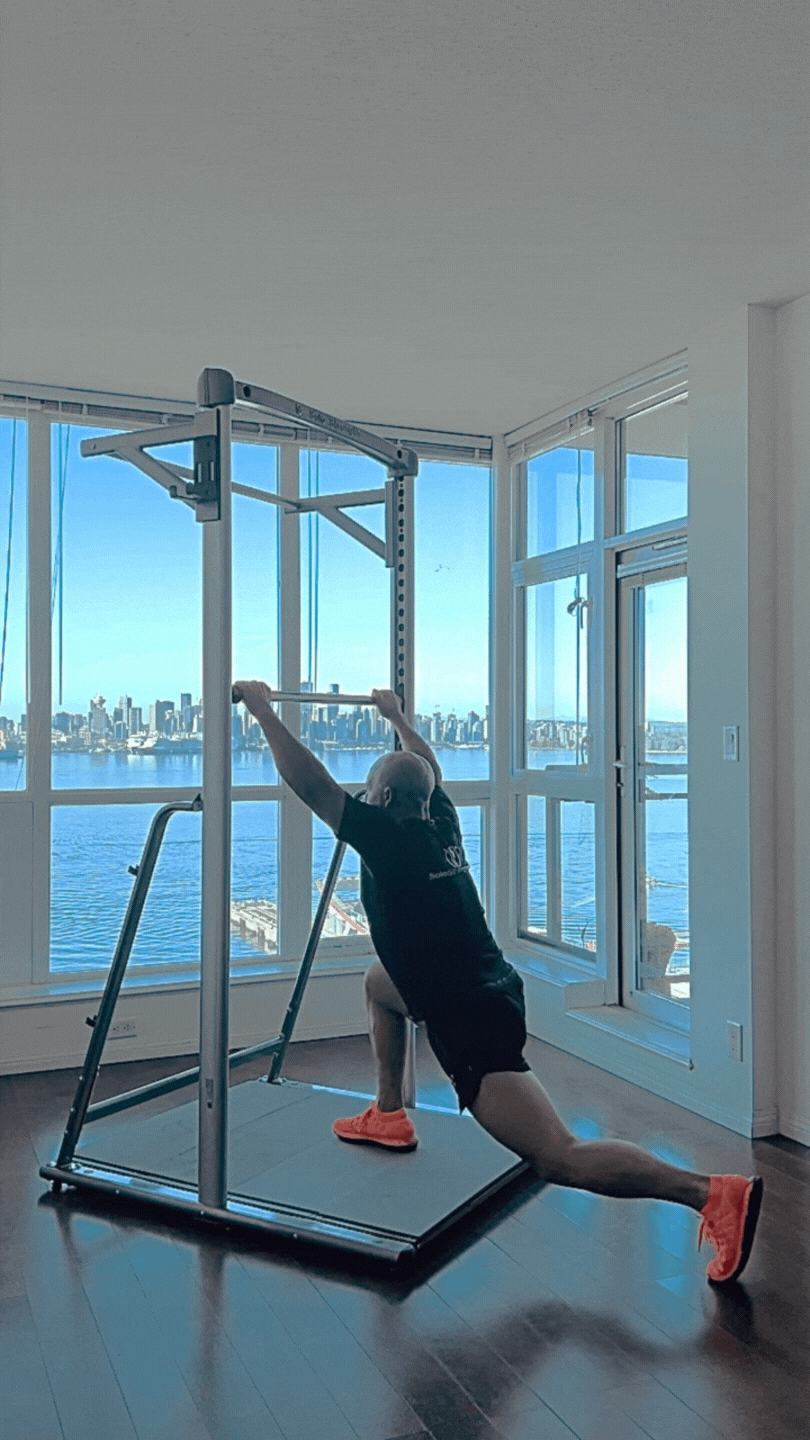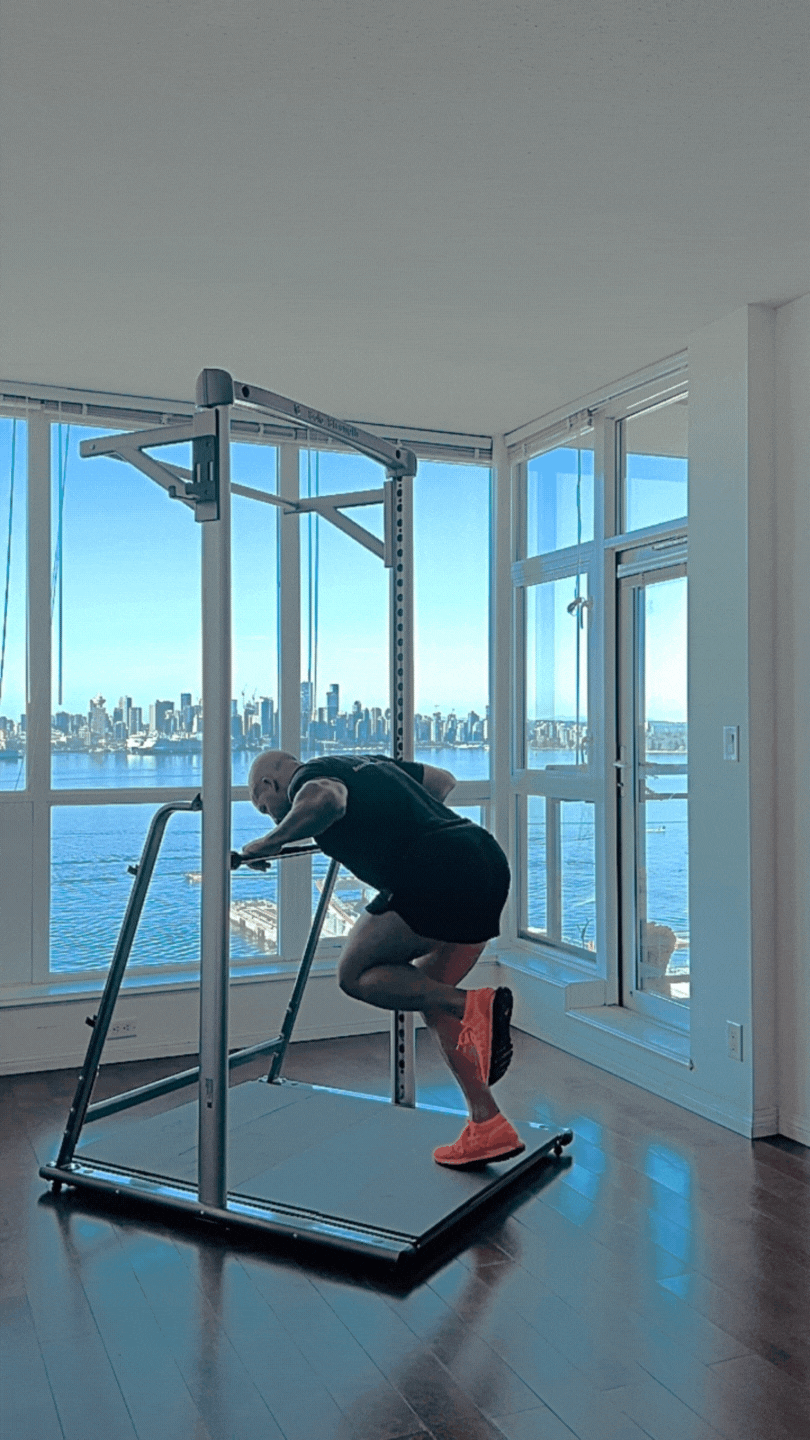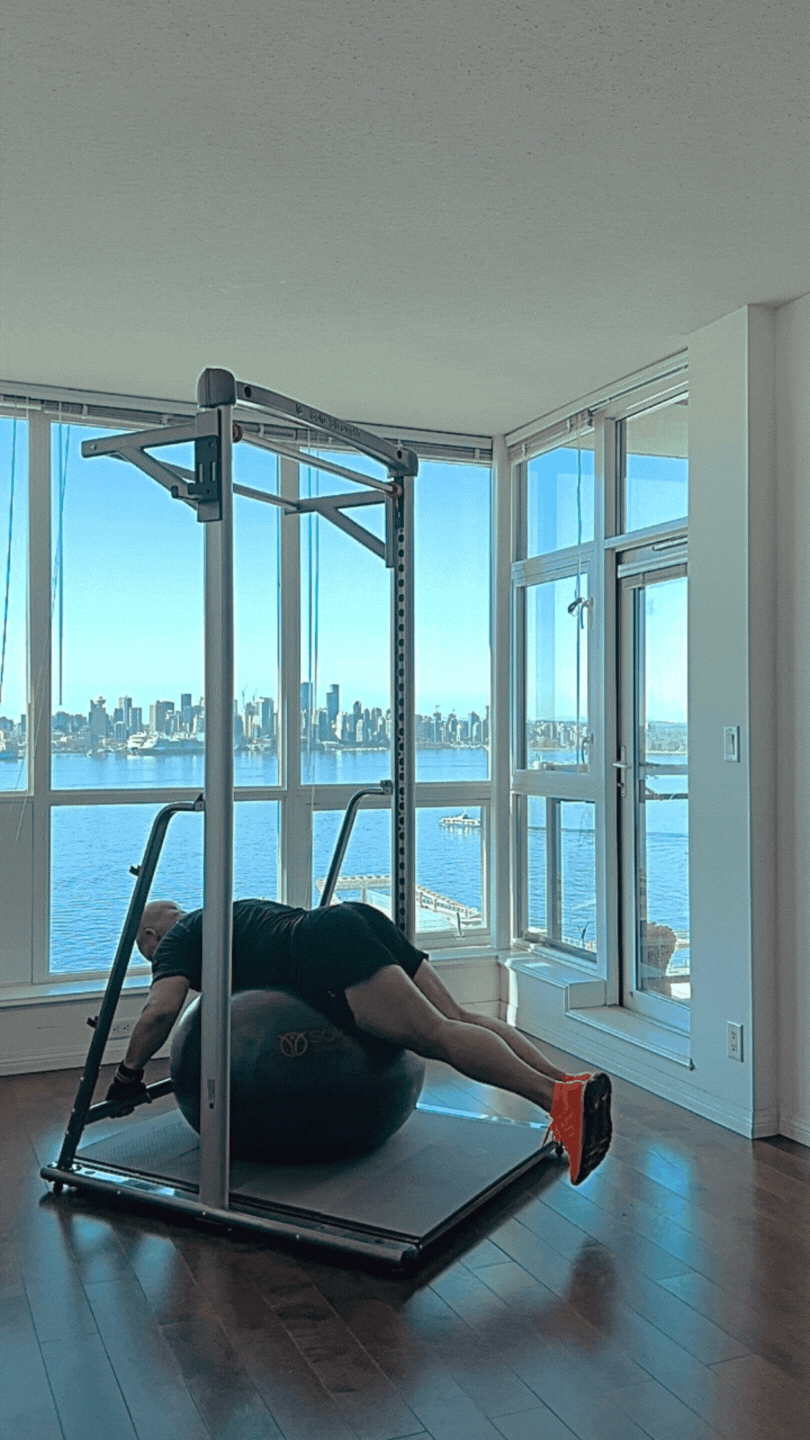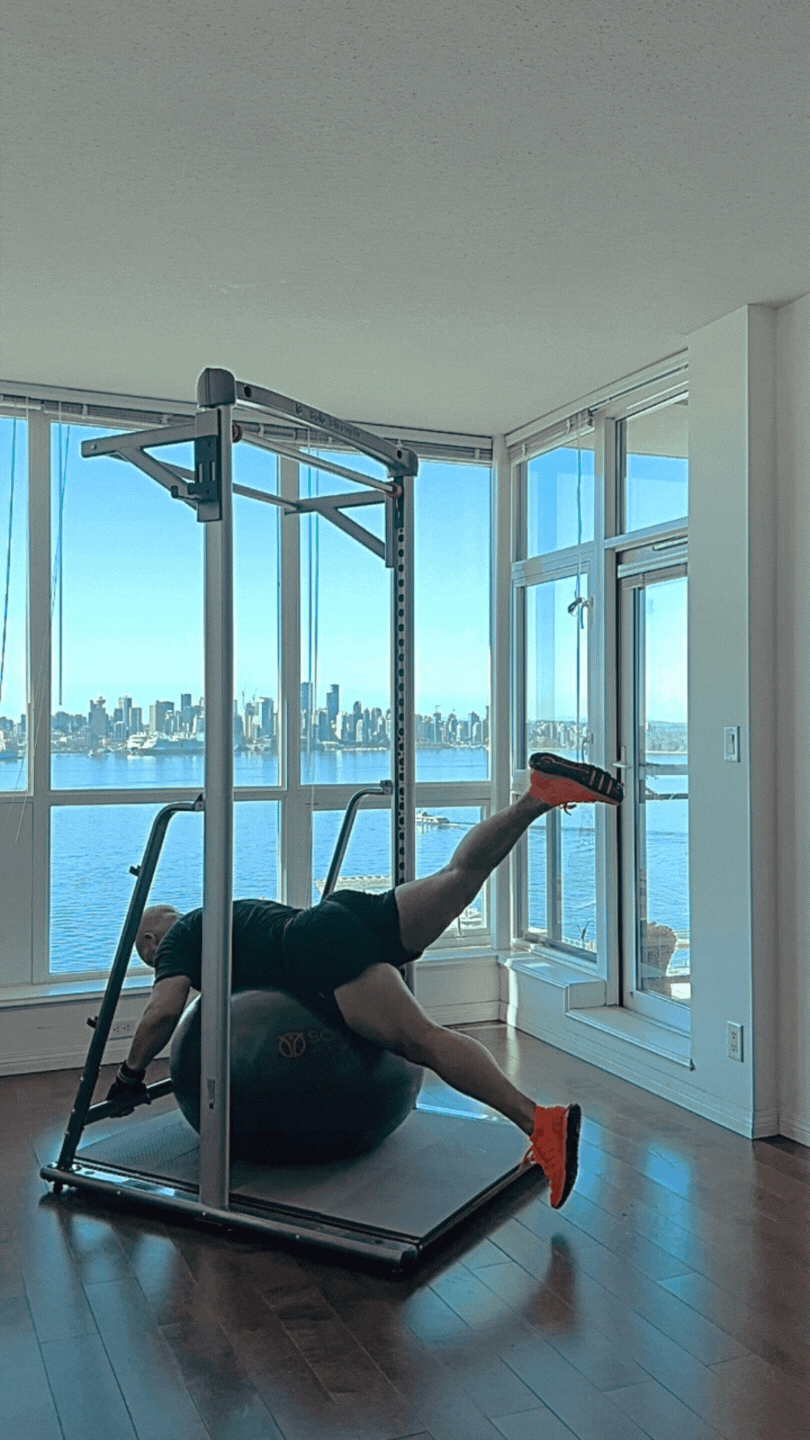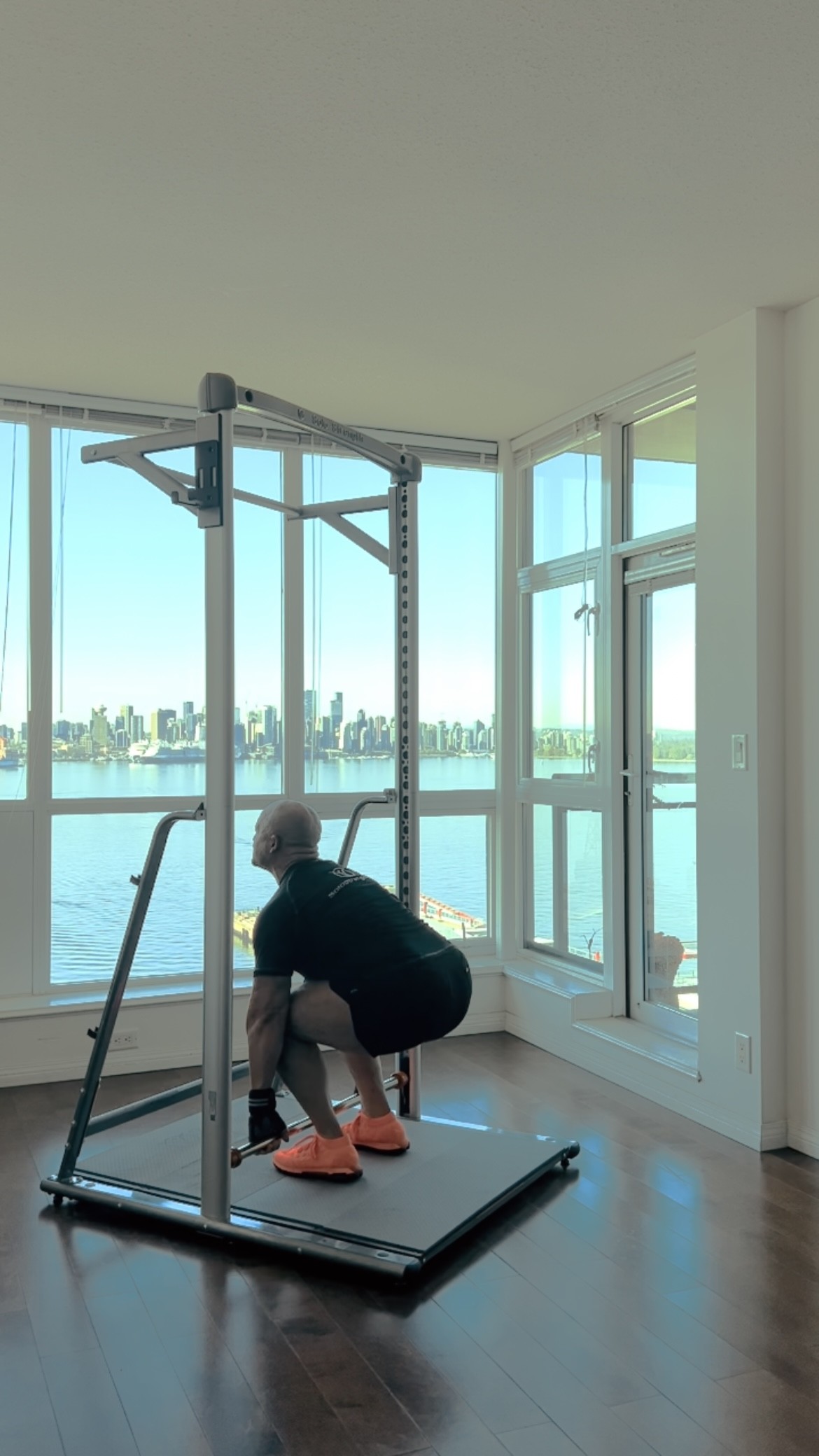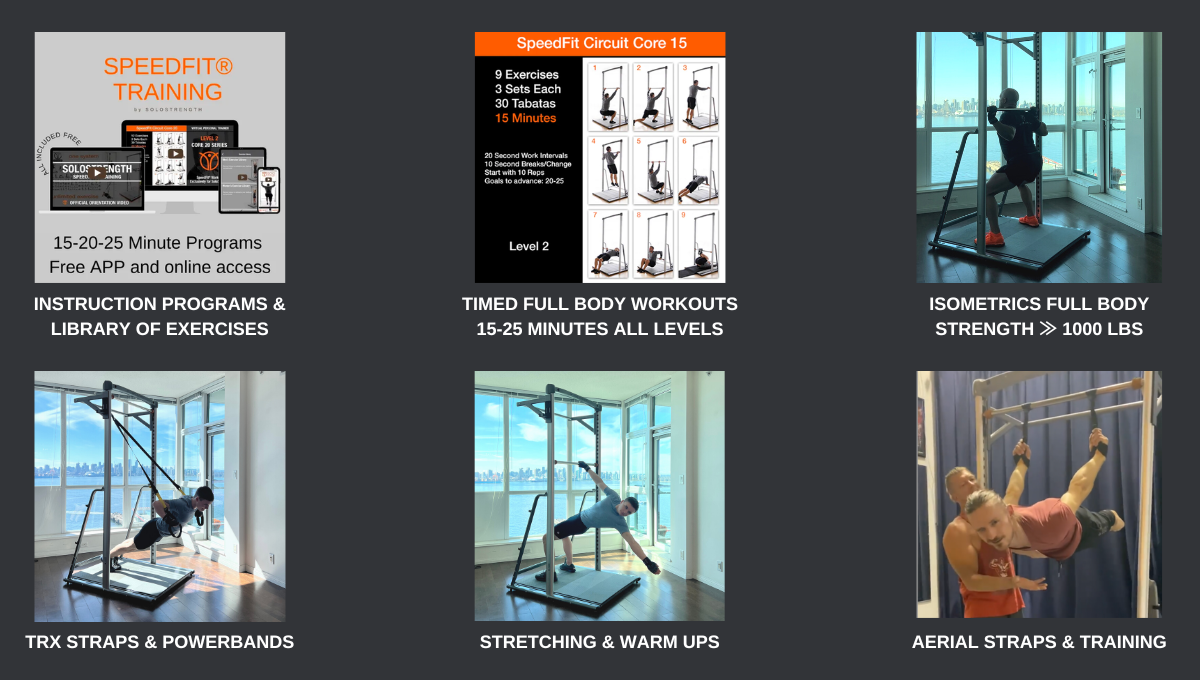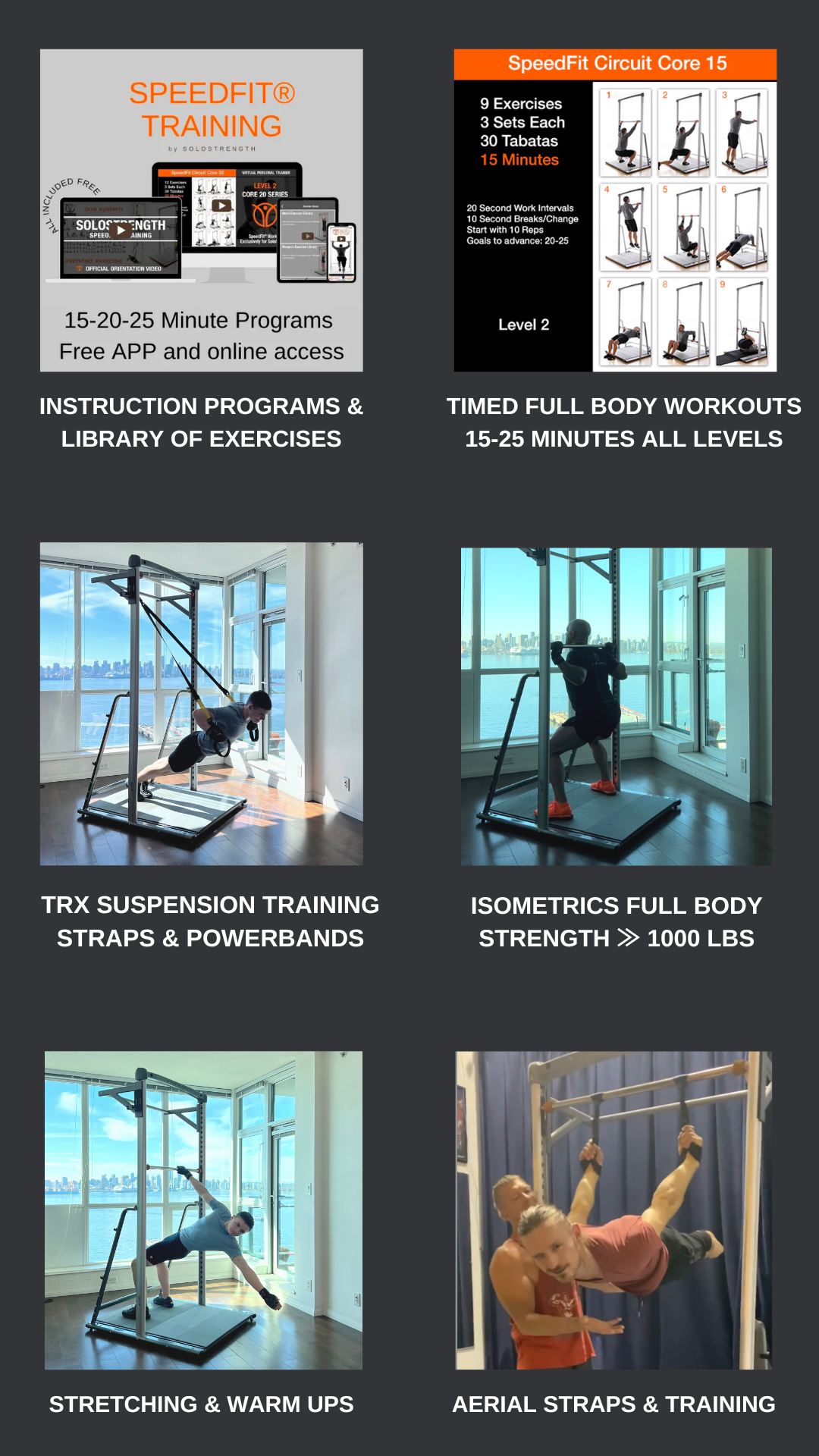How To Overcome Training Obstacles and Reach Your Goals
Introduction: Understanding the Common Obstacles in Bodyweight Training
When it comes to bodyweight training, there are a variety of challenges that individuals can encounter along the way. From lack of space and time to plateauing and injury, these obstacles can make it difficult to stay motivated and committed to a regular workout routine. However, by understanding these obstacles and learning how to overcome them, it's possible to achieve your fitness goals and make progress toward a healthier, stronger you.
The most common obstacles to getting started are both the lack of space and the lack of time. With people’s homes and apartments getting more expensive and smaller, it's no surprise that lack of space is an issue. Fortunately, there are solutions (we have many). This is complicated by the fact that more people now have home offices than ever before. Combined with more pressure in our work lives and not-so-clear distinctions between home and work, it can also be harder to find the time.
Once started, many face different challenges that prevent them from staying consistent. Plateauing, boredom, and injuries are often underappreciated causes of failing to achieve your goals. Your momentum is interrupted, and what was once easy, suddenly doesn’t feel that way. All it can take is one week.
At SoloStrength, we are more than just a fitness equipment company. We want to provide our community with the tools they need for success, and sometimes, the tools they need are facts and insights.
Table Of Contents:
Obstacle 1: Lack of Space - Tips for Maximizing Your Home Gym Space
Obstacle 2: Lack of Time - How to Fit Bodyweight Training into Your Busy Schedule
Obstacle 3: Plateauing - Strategies for Breaking Through Plateaus in Bodyweight Training
Obstacle 4: Boredom - How to Keep Your Bodyweight Workouts Fresh and Exciting
Obstacle 5: Injury - How to Prevent and Recover from Injuries in Bodyweight Training
Conclusion: Overcoming Obstacles and Reaching Your Bodyweight Training Goals
Obstacle 1: Lack of Space - Tips for Maximizing Your Home Gym Space
One of the most significant obstacles in bodyweight training is a lack of space. Many people’s spaces are either too small, too cluttered, or not dedicated solely to working out. A dedicated workout space helps you get in the zone when it's time for exercise. With a little creativity, it’s possible to create a space that meets your needs and helps you achieve your goals.
The most common strategy is to use multi-functional equipment. Instead of buying specific, single-use exercise equipment, look for items that can be used for multiple exercises. For example, resistance bands can be used for a variety of upper and lower body exercises, and suspension trainers like TRX can provide a full-body workout in a small amount of space. Both of these can be attached to the SoloStrength Training Station.
Another way to maximize your home gym space is to utilize vertical space. Modular equipment that can have a pull-up and dip bar installed is great for adding functionality without adding Space. Consider looking for wall-mounted, door-mounted, or even corner-mounted versions of the equipment.
Finally, consider creating a designated workout space within your home. By designating a specific area for your workouts, you can better control the space and keep it free from clutter. This can help you stay focused and motivated during your workouts, and ensure that you have enough space to perform the exercises you want to do.
Obstacle 2: Lack of Time - How to Fit Bodyweight Training into Your Busy Schedule
Another common obstacle that people face when it comes to bodyweight training is a lack of time. Many people lead busy lives, and finding the time to work out can be a challenge. However, with some careful planning and prioritization, it's possible to fit bodyweight training into even the busiest of schedules.
One way to fit bodyweight training into your busy schedule is to schedule your workouts in advance. Block off time on your calendar for your workouts, and treat them as you would any other important appointment. This can help ensure that you prioritize your workouts and make time for them, even when your schedule is busy.
Additionally, consider breaking up your workouts into shorter, more manageable sessions. Instead of trying to squeeze in a long workout, aim for several shorter workouts throughout the day. For example, you could do a quick 10-minute workout in the morning, another during your lunch break, and a final one in the evening. The SpeedFit Workouts have been designed specifically to give you a great workout when time is limited.
Another strategy for fitting bodyweight training into your busy schedule is to make it a part of your daily routine. For example, you could incorporate bodyweight exercises into your morning routine, such as doing a few sets of push-ups or squats before you shower. By making exercise a habitual part of your day, you'll be more likely to stick to your routine and make progress toward your fitness goals.
Finally, consider enlisting the help of a workout buddy or personal trainer. Working out with someone else can help keep you accountable and motivated, and a personal trainer can help create a customized workout plan that fits your busy schedule and helps you reach your goals.
Obstacle 3: Plateauing - Strategies for Breaking Through Plateaus in Bodyweight Training
Plateauing is another common obstacle that people face when it comes to bodyweight training. After a period of progress, it's common to hit a plateau where you stop seeing results and struggle to make progress. The lack of results during a plateau is where many give up due to the loss of momentum.
One strategy is to vary your workouts and incorporate new exercises. If you've been doing the same bodyweight exercises for an extended period, your body may have adapted to the workout, and you may not be challenging your muscles enough to continue making progress. By incorporating new exercises or variations of existing exercises, you can challenge your muscles in new ways and continue making progress toward your goals. Check out our Exercise Library for ideas.
Another strategy is to increase the intensity of your workouts. One way to do this is to add resistance to your bodyweight exercises. For example, you can use resistance bands or weight vests to make exercises like push-ups or squats more challenging. Additionally, you can increase the number of reps or sets that you do, decrease the rest time between sets, or perform the reps more slowly to make your workouts more intense.
Finally, consider tracking your progress and setting new goals. By tracking your progress and setting specific, measurable goals, you can hold yourself accountable and continue pushing yourself to improve. Set goals that are challenging but achievable, and make sure to celebrate your progress along the way.
While plateauing in bodyweight training can be frustrating, there are several strategies that you can use to break through plateaus and continue making progress toward your goals. By varying your workouts, increasing the intensity of your exercises, tracking your progress, and setting new goals, you can continue to challenge yourself and see results.
Obstacle 4: Boredom - How to Keep Your Bodyweight Workouts Fresh and Exciting
Another common obstacle in bodyweight training is boredom. Doing the same exercises over and over again can become tedious, and it's essential to find ways to keep your workouts fresh and exciting. Fortunately, there are several strategies that you can use to mix up your workouts and stay engaged.
One strategy is to incorporate different types of bodyweight exercises. There are many different types of bodyweight exercises, including isometric exercises, plyometric exercises, and mobility exercises. By incorporating different types of exercises, you can challenge your body in new ways and keep your workouts interesting.
Another strategy is to incorporate partner exercises or group workouts. Working out with a partner or in a group can be a great way to stay motivated and push yourself to try new things. Plus, it's a fun way to build camaraderie and connect with others who share your fitness goals.
You can also mix up your workout environment. If you typically work out at home, try taking your workout outside or to a local park. Or, if you typically work out in the same room, try rearranging your equipment or using a different space for your workouts.
Finally, consider incorporating technology into your workouts. Many apps and websites offer bodyweight workouts and challenges, which can help keep your workouts fresh and exciting.
In conclusion, boredom can be a significant obstacle in bodyweight training, but there are several strategies that you can use to keep your workouts fresh and exciting. By incorporating different types of exercises, partnering with others, changing up your workout environment, and incorporating technology into your workouts, you can stay engaged and motivated toward your fitness goals.
Obstacle 5: Injury - How to Prevent and Recover from Injuries in Bodyweight Training
Injury can be a significant obstacle in bodyweight training, but there are several steps you can take to prevent injuries and recover if you do get injured. The first step is to always warm up before your workouts. Warming up can help prepare your muscles and joints for exercise and reduce the risk of injury.
It's also essential to use proper form and technique when performing exercises. If you're not sure how to perform an exercise correctly, consider working with a personal trainer or watching instructional videos online. Using proper form can help reduce the risk of injury and ensure that you're targeting the right muscles.
Another way to prevent injuries is to listen to your body. If something feels off or you're experiencing pain, stop exercising, and rest. Pushing through pain can lead to further injury and a more extended recovery time. This does not just go for injuries though. Extended periods (months) of high-intensity training require periods of rest where you work out less intensely. You will find you aren’t able to push as hard and this is your body telling you it's time to slow down.
If you do get injured, it's essential to seek medical attention and follow a proper recovery plan. Depending on the severity of the injury, this may involve rest, physical therapy, or other treatments. It's important to follow your healthcare provider's recommendations and not rush back into your workouts before you're ready.
Injuries can be a significant obstacle in bodyweight training, but there are steps you can take to prevent injuries and recover if you do get injured. Always warm up before your workouts, use proper form and technique, listen to your body, seek medical attention, and follow a proper recovery plan if you do get injured. By taking these steps, you can reduce the risk of injury and stay on track toward your fitness goals.
Conclusion: Overcoming Obstacles and Reaching Your Bodyweight Training Goals
Bodyweight training can be an excellent way to build strength, flexibility, and overall fitness. However, it's not without its challenges. From lack of space and time to boredom and injury, several obstacles can stand in the way of reaching your bodyweight training goals.
Fortunately, by understanding these obstacles and taking steps to overcome them, you can stay on track toward your fitness goals. Whether it's maximizing your home gym space, fitting bodyweight training into your busy schedule, breaking through plateaus, keeping your workouts fresh and exciting, or preventing and recovering from injuries, there are solutions to each of these common obstacles.
By incorporating the tips and strategies outlined in this article, you can overcome these obstacles and achieve your bodyweight training goals. Remember to stay motivated, stay consistent, and don't be afraid to seek help or guidance when needed. With the right mindset and approach, you can build a successful bodyweight training routine and reach your fitness goals.
Other recent blog posts...
If you liked this, you might like our other recent posts:
View more SoloStrength SpeedFit® Training Here.
Posted: April 14, 2023
Exclusive for SoloStrength Lifestyle Products.
More and more with SoloStrength...
Choose Your Perfect Ultimate Strength And Stretching Training Station:
#1 Bodyweight Home Gym Workout Systems
NEW Adjustable Pull Up Bar
Calisthenics Workouts
Isometrics Equipment
Bodyweight Exercise Equipment

SoloStrength Adjustable Height Bar Changes Everything
✓ 3 Second Bar Height Changes
✓ No Setup Time To Start Your Workout
✓ Full Body Satisfying Workouts
✓ You Just Feel Awesome Every Workout
✓ Calisthenics, Stretching, Isometrics
✓ Circuits, Cardio Functional, Strength
✓ Get FIT Faster. Stay FIT Forever 💪
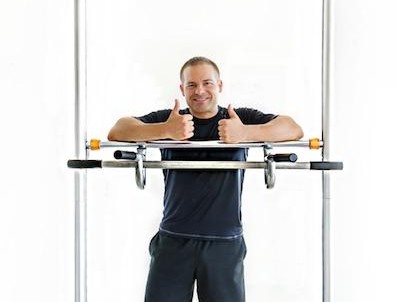
Welcome! Take this opportunity now to SIGN UP FOR MORE!
You can join over 50,000 subscribers worldwide and 1000s of customers who are taking control of their fitness and getting more from their workouts with SoloStrength® training systems!








